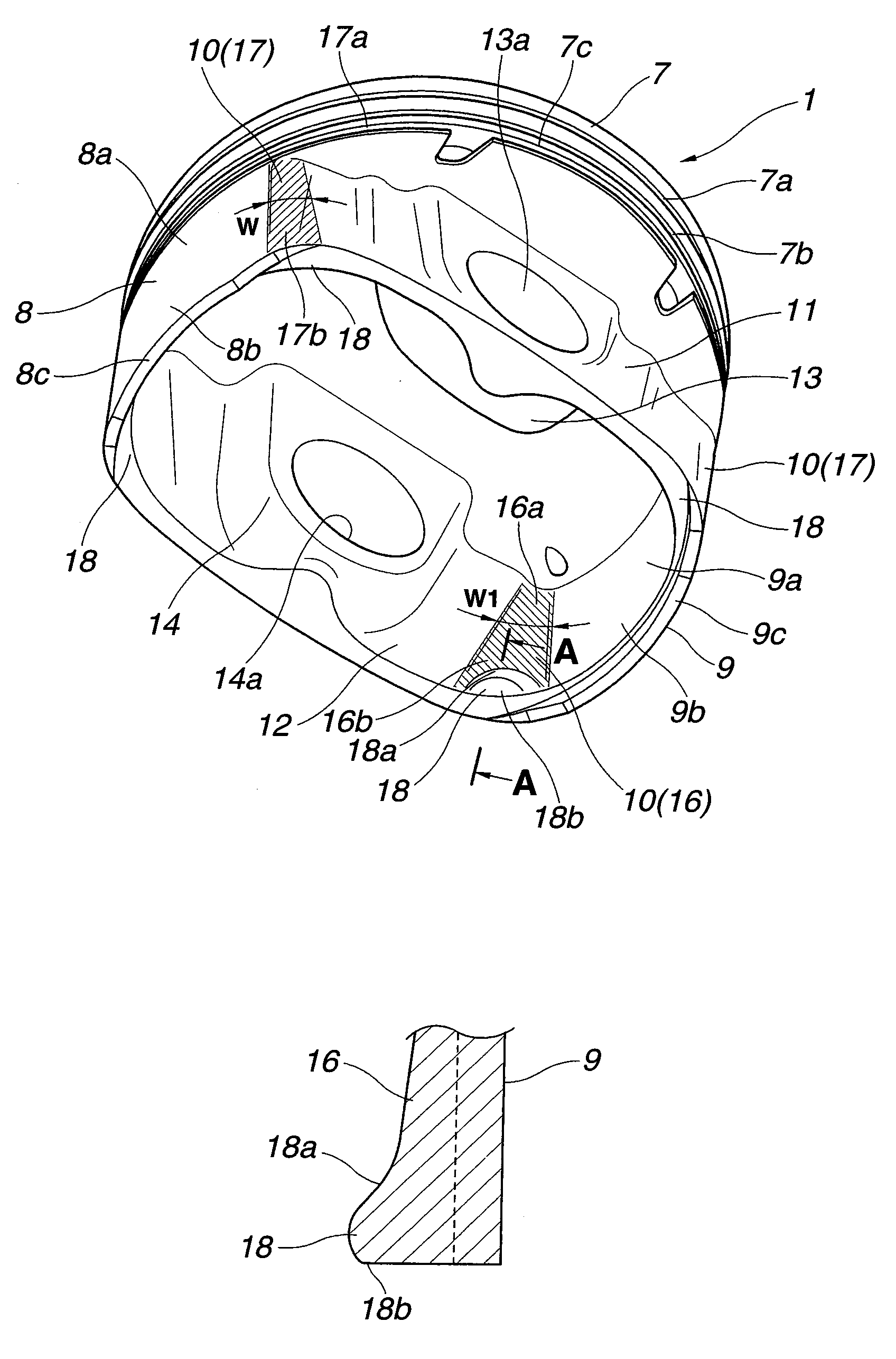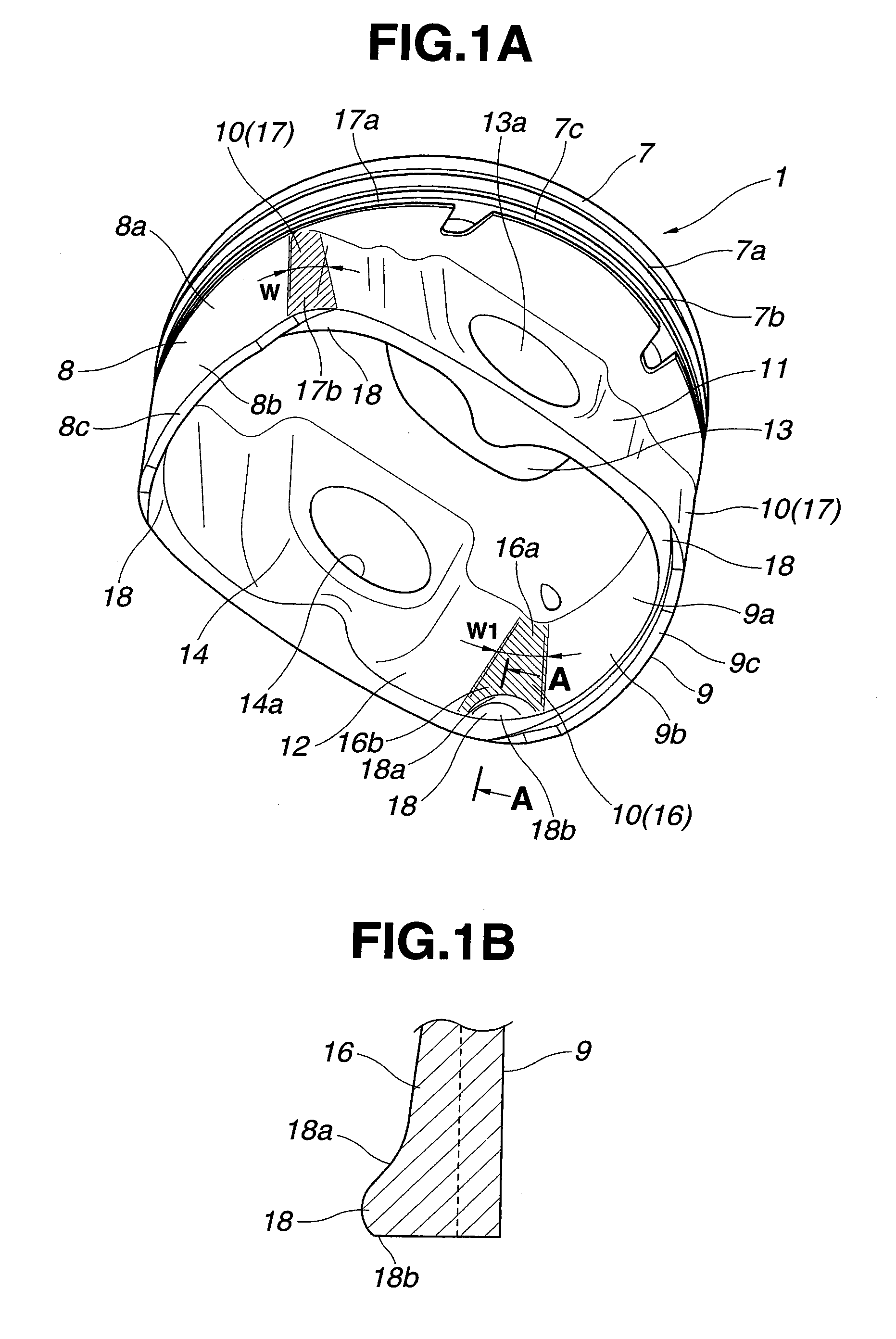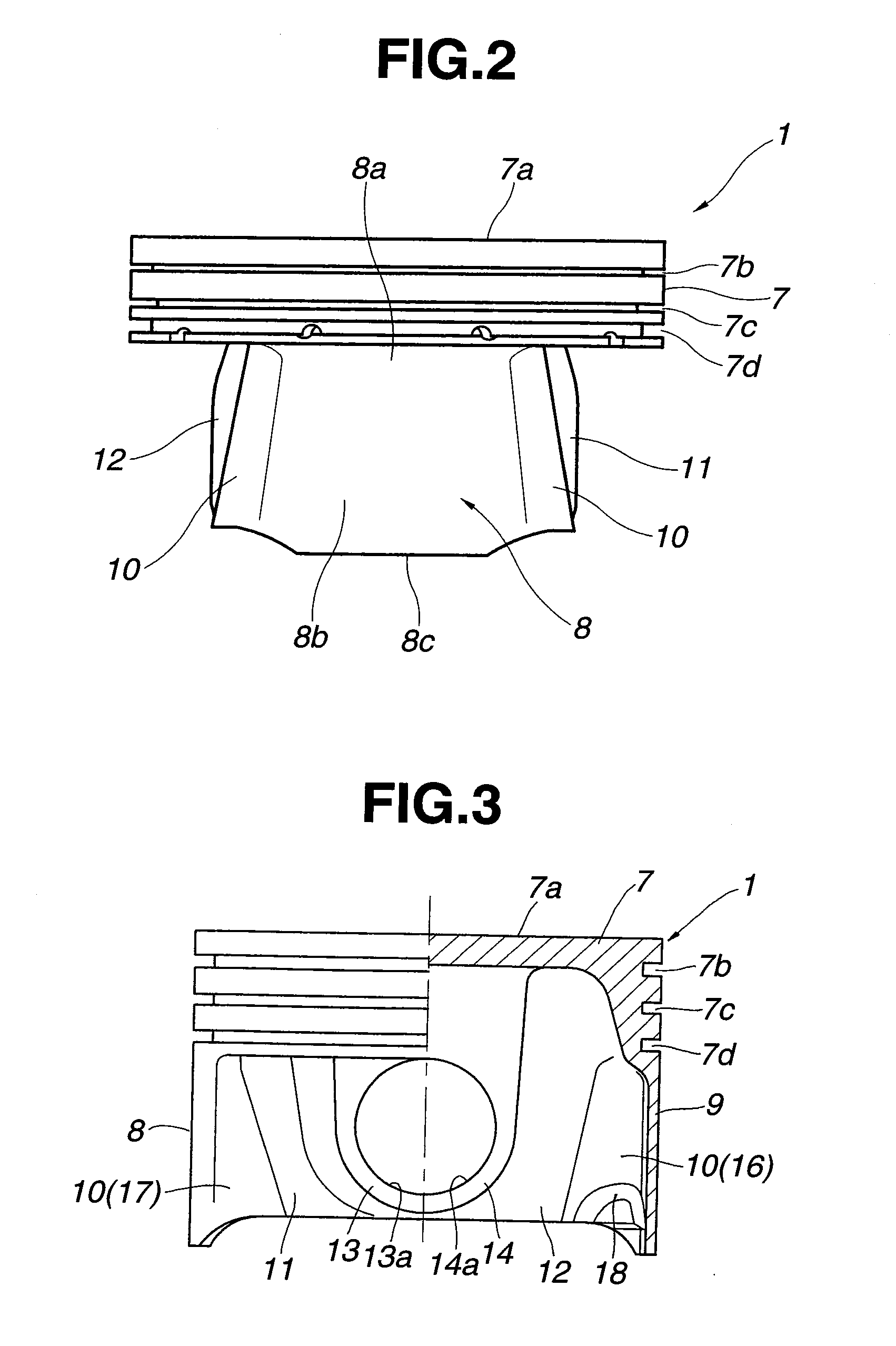Internal Combustion Engine Piston
- Summary
- Abstract
- Description
- Claims
- Application Information
AI Technical Summary
Benefits of technology
Problems solved by technology
Method used
Image
Examples
first embodiment
[0038]FIG. 8 shows a result of an experiment in which the amount of deformation of a thrust-side skirt at a point between the upper end and the lower end is measured under the same condition that the thrust-side skirt is in contact with cylinder wall 3 on expansion stroke, in a case of piston 1 which is indicated by a solid line, and in a case of a piston according to a reference example which is indicated by a broken line. In the piston according to the reference example, the amount of deformation significantly increases as the position moves from the upper end to the lower end. In contrast, in piston 1 according to the present embodiment, the amount of deformation is smaller and more uniform all over the range between the upper end and the lower end, although it is slightly relatively large at a position slightly below the upper end, and at or near the lower end. This is achieved because the characteristic shape of connecting section 10, and the provision of projection 18 serve t...
second embodiment
[0040]FIGS. 10 and 11 show a second embodiment in which thrust-side and anti-thrust-side skirts 8 and 9 are formed and arranged asymmetrically with respect to the plane passing through the central longitudinal axis of piston 1. Specifically, the circumferential length X of anti-thrust-side skirt 9 is set shorter than the circumferential length X1 of thrust-side skirt 8. Namely, the contact area of anti-thrust-side skirt 9 with cylinder wall 3 is set smaller than that of thrust-side skirt 8. This is because the pressing force applied to anti-thrust-side skirt 9 is smaller than the pressing force applied to thrust-side skirt 8.
[0041]The radius of curvature of each of two connecting sections 10 closer to thrust-side skirt 8 is set equal to that in the first embodiment. On the other hand, the radius of curvature of each of two connecting sections 10a closer to anti-thrust-side skirt 9 is set smaller than that of connecting sections 10 closer to thrust-side skirt 8.
[0042]Moreover, the th...
PUM
 Login to View More
Login to View More Abstract
Description
Claims
Application Information
 Login to View More
Login to View More - R&D
- Intellectual Property
- Life Sciences
- Materials
- Tech Scout
- Unparalleled Data Quality
- Higher Quality Content
- 60% Fewer Hallucinations
Browse by: Latest US Patents, China's latest patents, Technical Efficacy Thesaurus, Application Domain, Technology Topic, Popular Technical Reports.
© 2025 PatSnap. All rights reserved.Legal|Privacy policy|Modern Slavery Act Transparency Statement|Sitemap|About US| Contact US: help@patsnap.com



